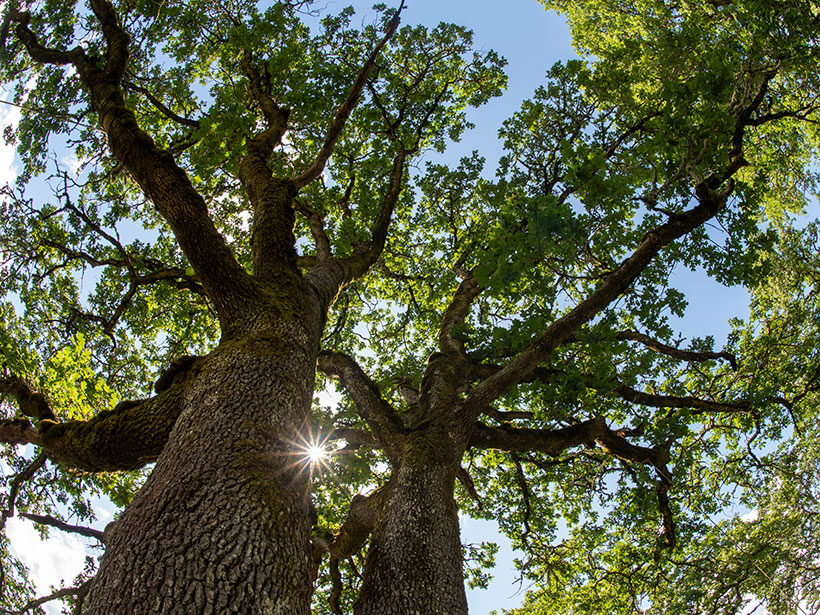Source: Water Resources Research
An important component of Earth’s hydrologic cycle is transpiration—the movement of water through plants. Because transpiration affects near-surface temperatures, streamflows, and the productivity of ecosystems, understanding potential sources of subsurface moisture and how plants use them is crucial for developing accurate dynamic vegetation and land surface models. Our knowledge of these processes, however, is far from complete, in part because they are hidden below the ground.
To better understand where trees get their water from, Hahm et al. studied Oregon white oaks (Quercus garryana), deciduous hardwoods that thrive in Pacific Northwest locales with thin soils underlain by highly weathered bedrock. Because these gnarled oaks have deep taproots, scientists have long assumed they draw upon groundwater to survive the long dry seasons typical of the Mediterranean climate in their range.
To test this hypothesis, the researchers used a combination of isotopic analyses and hydrologic measurements to characterize the sources of water used by the oaks at a study site in Northern California’s Eel River Critical Zone Observatory. The data showed that despite the presence of groundwater just a few meters below the surface, these trees during summer depend primarily upon water drawn from the soil and the deep unsaturated zone, the region of weathered bedrock from which groundwater recedes at the beginning of the dry season. These results indicate that the trees’ use of rock moisture may be due to the groundwater’s low oxygen content and location within bedrock of low permeability.
The findings highlight that not all groundwater is accessible to plants, even when it is within reach of their roots, and suggest that patterns of water uptake by oaks in Mediterranean climates may be site specific. Because forests are commonly located on hillsides with thin soils that overlie weathered bedrock, the results further suggest that extraction of rock moisture may be a globally important process.
As one of a growing number of studies demonstrating that trees can tap into water stored within weathered bedrock, this paper has important implications for forest management, according to the authors. The results emphasize the need to better understand the distribution of water in weathered bedrock on a landscape scale to improve predictions of how forests will respond to extended drought. (Water Resources Research, https://doi.org/10.1029/2020WR027419, 2020)
—Terri Cook, Science Writer
Citation:
Cook, T. (2020), How some trees survive the summer dry season, Eos, 101, https://doi.org/10.1029/2020EO152092. Published on 03 December 2020.
Text © 2020. AGU. CC BY-NC-ND 3.0
Except where otherwise noted, images are subject to copyright. Any reuse without express permission from the copyright owner is prohibited.
Text © 2020. AGU. CC BY-NC-ND 3.0
Except where otherwise noted, images are subject to copyright. Any reuse without express permission from the copyright owner is prohibited.

